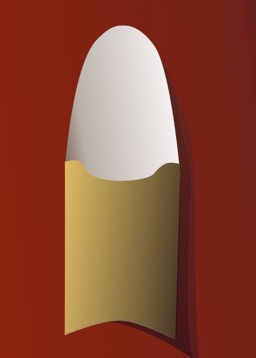Buy a print
SNACK PACK
Fast food packaging is a significant element of of our refuse even though some of the packs are elegantly designed. This card support for a sandwich wrap, made from paperboard, is a fine example of a simple form well made and carefully detailed.
HISTORY
The first commercial paperboard was produced in England in 1817 by the firm M. Treverton & Son. But it was scottish-born Robert Gair, a printer and paper bag manufacturer in Brooklyn who invented the pre-formed cardboard box in 1890. This was cut to shape and creased ready to fold, then shipped flat to the factory where it was assembled prior to use. These boxes became popular with the growth of breakfast cereals in the early part of the 20th century. They are now an integral element of product packaging where the versatility of paperboard makes it suitable for packaging items as diverse as hair dryers and chocolates.
MANUFACTURE
Paperboard is made in the same way as paper, wood pulp is bleached and spread onto a mesh conveyor belt on a machine that can handle heavier grades of material. Some paperboards are made from multilayers of pulp to create a thicker board. The top layer may be a different colour or coated to give it a better appearance. The board is dried and rolled to smooth the surface before being cut into sheets.
DRAWING
The pack is made from simple curves which echo one another. The upper section is an elongated semi ellipse which complements the base and reveals the inner white lining. The slightly curved front surface catches the light and gives a gradation of tone. This is reversed on the upper section which appears to catch more light. The whole pack casts interesting shadows making it stand out from the background.














